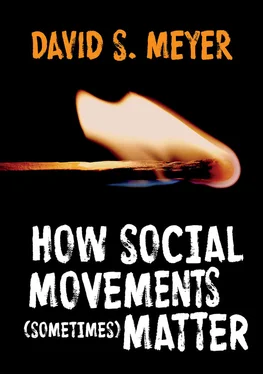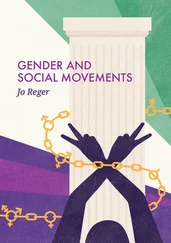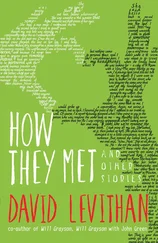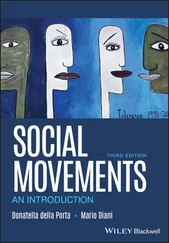Some elements of opportunity, like the electoral system or the nature of government institutions, tend to be pretty stable over time. Others, however, like the positions of people in power and their coalitions of support, are far more dynamic. The savvy organizer pays attention to all of this. Her job is to find the most effective route to political influence, after assessing both available opportunities and the resource of her supporters.
Resources are the tools and assets that a movement can deploy in support of its ideas, and they vary tremendously across movements and contexts (McCarthy and Zald 1977). It’s inspiring to talk about “people power,” for example, but it depends upon large numbers willing to take on risks in collective action. What’s more, all people don’t count equally in a political system. Individuals with disproportionate wealth, status, or knowledge can generate more attention, and potentially exercise greater influence, than far larger numbers of less elite people.
Such resources are not stagnant, and skillful deployment of assets can leverage other assets. A movement with a great deal of money can start with paid advertising and paid supporters, which, carefully deployed, might recruit more volunteers. A movement that starts with a committed few can take dramatic action to generate political attention to its issues of concern and its actions, thus leading to more public support. A movement with broad support at the grassroots can mobilize that support effectively to demonstrate the capacity to affect elections, and thereby recruit institutional allies. None of this, of course, is automatic, and organizers’ success in leveraging resources effectively depends not only on skill and context, but also tactics.
A tactic is a way to send a message. Organizers can send a message clearly and directly by holding a press conference or sending a letter. Enlisting others to send the same message in letters or phone calls represents an effort to increase its visibility. Organizers can amplify their message with larger numbers by holding a demonstration, march, or rally. They can demonstrate the depth of their commitment by taking more dramatic action, ranging from nonviolent and symbolic civil disobedience to vandalism and violence against property and persons. In choosing a message, organizers generally draw from a familiar “play list” of tactics, familiar to both supporters and authorities. In choosing tactics, movement organizers need to be cognizant of at least three distinct audiences: authorities, supporters, and potential supporters. To make sense of the range of possible approaches to strategic action, Tilly (1978) suggested that a tactic is a performance that sends a message to all about activists’ worthiness , unity , numbers , and commitment . Costumes, like the faux Indian disguises donned by the Boston Tea Partiers, the animal costumes worn by animal rights activists, or the naked displays of crusaders against gender violence, are a frequent tactical addition. Importantly, although organizers enjoy direct means of communicating with all of their audiences, larger numbers can be reached through mediated communication, when mass media choose to cover and define an event. The ideal tactic affirms supporters, attracts bystanders, and gets authorities to worry about what else these protesters might do (Rochon 1998). A savvy organizer is mindful of developing approaches that are likely to engage all potential audiences, and to be attractive enough to mass media to extend beyond the movement’s network.
Protest movements are organized. Although events, a crystallized combination of tactics, constituencies, and claims, often include elements of spontaneity, like the bystanders who decided to join the patriots clambering on the tea ships, there is always an element of planning underneath. Organizers try to engage supporters, pick places, promote particular grievances and alternatives, and try to figure out what happens next. The continuing relationship among people committed to a particular vision of social change can broadly be thought of as an organization .
Here too, there is an enormous range of organizational forms and commitments. A small group that meets regularly in a church basement or around a kitchen table, where no one is paid, and participants get to know each other very well, can be the basis of an ongoing campaign for massive political change. At the other end of the organizational spectrum, social movements are often staged by well-established and well-resourced groups whose efforts span long periods of time and decades of engagement. Such organizations develop complicated bureaucratic structures for governance, and division of labor to execute plans. Some organizations develop in the service of one narrow objective, planning a particular protest or demonstration; they start with no commitment beyond the event. Others develop with longer-term goals that contain a range of events, activities, and even services (Blee 2012; Kretschmer 2019; Levy and Murphy 2006). All groups must manage the struggle of supporting their efforts, but those with a shorter-term, more limited focus, can often depend upon volunteer labor and low overheads. A group dependent upon volunteer efforts will have a difficult time sustaining presence over an extended campaign, because most people have to balance commitments beyond politics.
In contrast, organizations with broader or much longer-term objectives must develop systems to ensure that they have the money and expertise to continue. They need to rent offices, buy computers, maintain telephone lines and websites, and pay staff. Many different sources can provide that support, but each comes with different obligations and constraints. A group dependent upon funding from the government, for example, must follow the rules and restrictions of that government. A group dependent upon a few wealthy funders can’t risk offending or alienating those supporters, and can be subject to the whims of the funders. A group dependent upon large numbers of small donors must invest a great deal of time in soliciting that money, and is vulnerable to changes in the political environment.
Even as maintaining a stable presence in politics is costly, it also comes with some advantages. Professionals engaged in movement work may be reasonably well-paid and enjoy routine access to media or authorities. They can develop expertise in policy or politics, and they can pay close attention to events and policies, and act opportunistically (Staggenborg 1988). And a group that knows its efforts will be sustained can think about longer-term efforts. Organizations plan, and well-funded, stable, and professionalized groups should be able to plan better.
Strategy is a coherent plan of claims and tactics targeted at particular audiences that is intended to promote social change (Maney et al. 2012). Sometimes plans for social change are well-developed and articulated, based in informed understanding of the workings of government. At the same time, everyone engaged in a piece of the effort is unlikely to be aware of some master plan, or even a longer-term plan altogether. Sometimes, participants just know that they have to do something to express their own concerns, trusting that well-intentioned and morally grounded action will somehow contribute to the change they seek to promote. At the same time, some organizers will have a vision of how social change takes place, and the influence of a set of actions they can coordinate can trigger further action. Strategy involves choices about which grievances to emphasize, who to focus on recruiting, and what to have adherents do. Importantly, however, purposeful strategists operate in a larger universe they can’t control, with both supporters and opponents making their own initiatives.
Читать дальше












